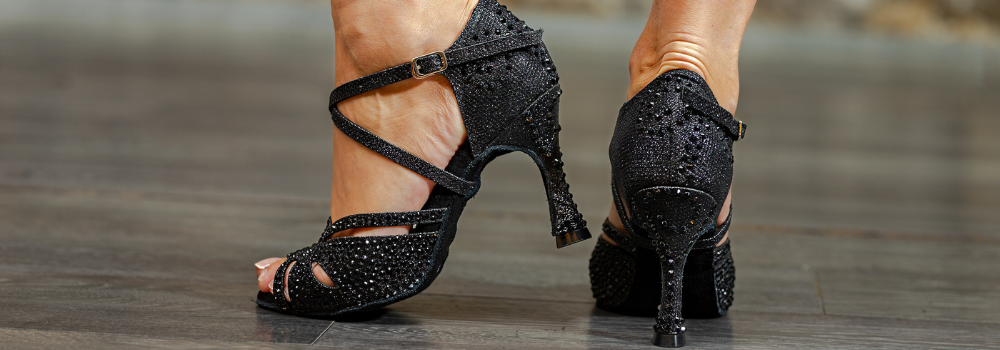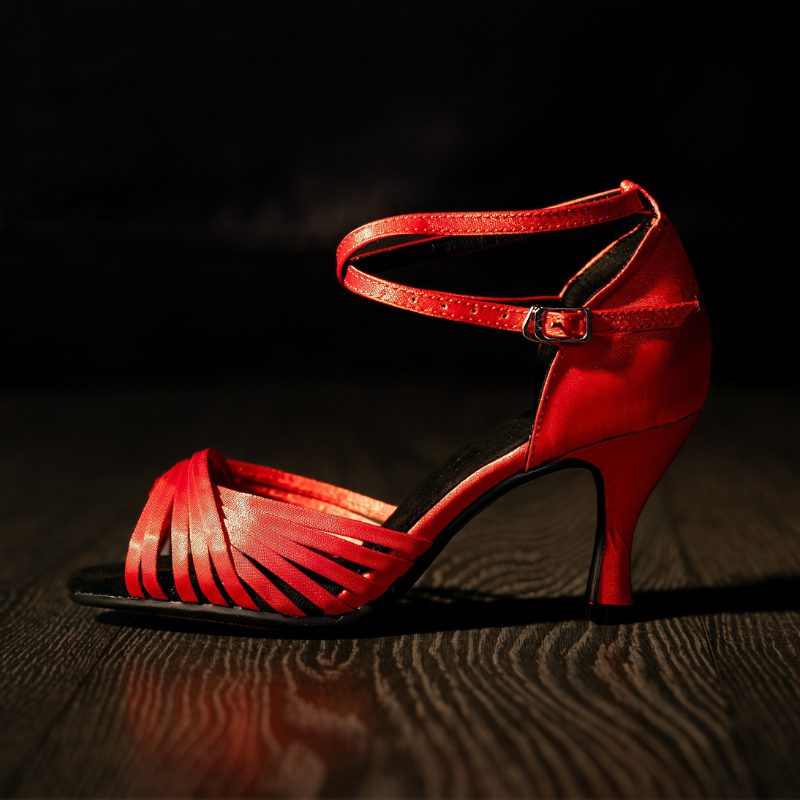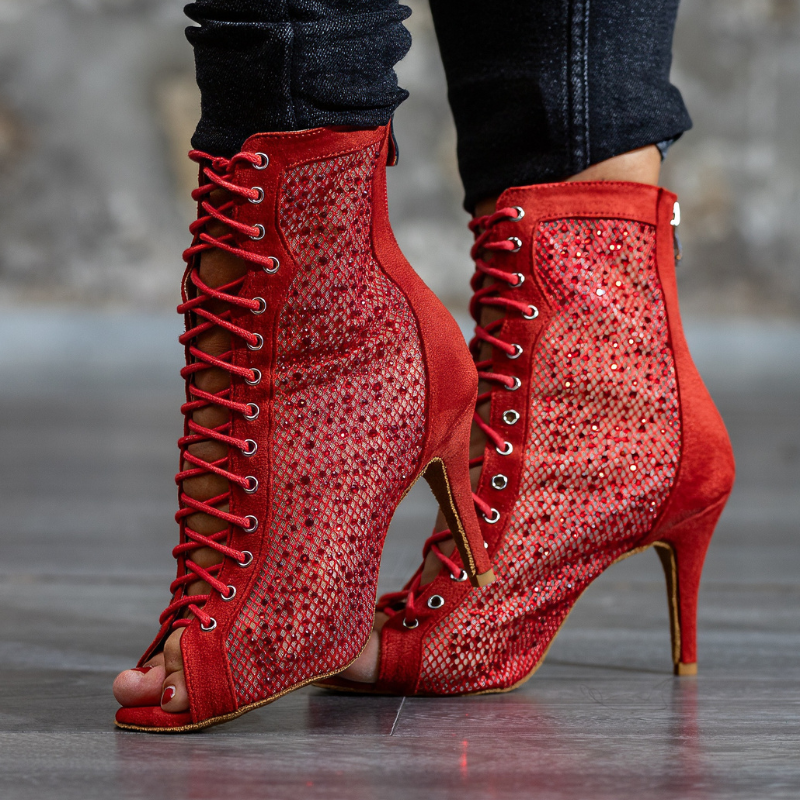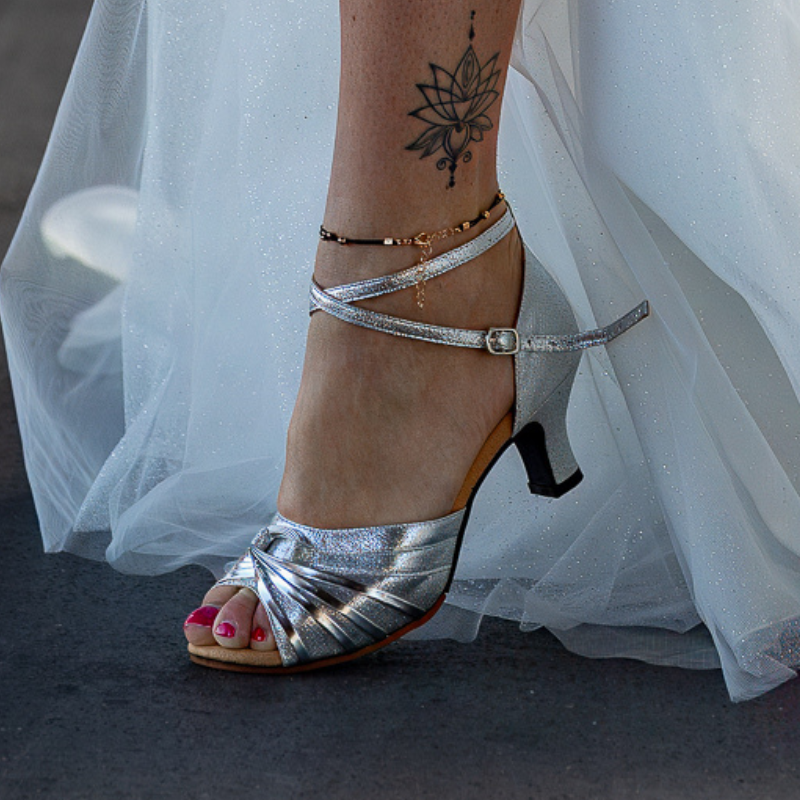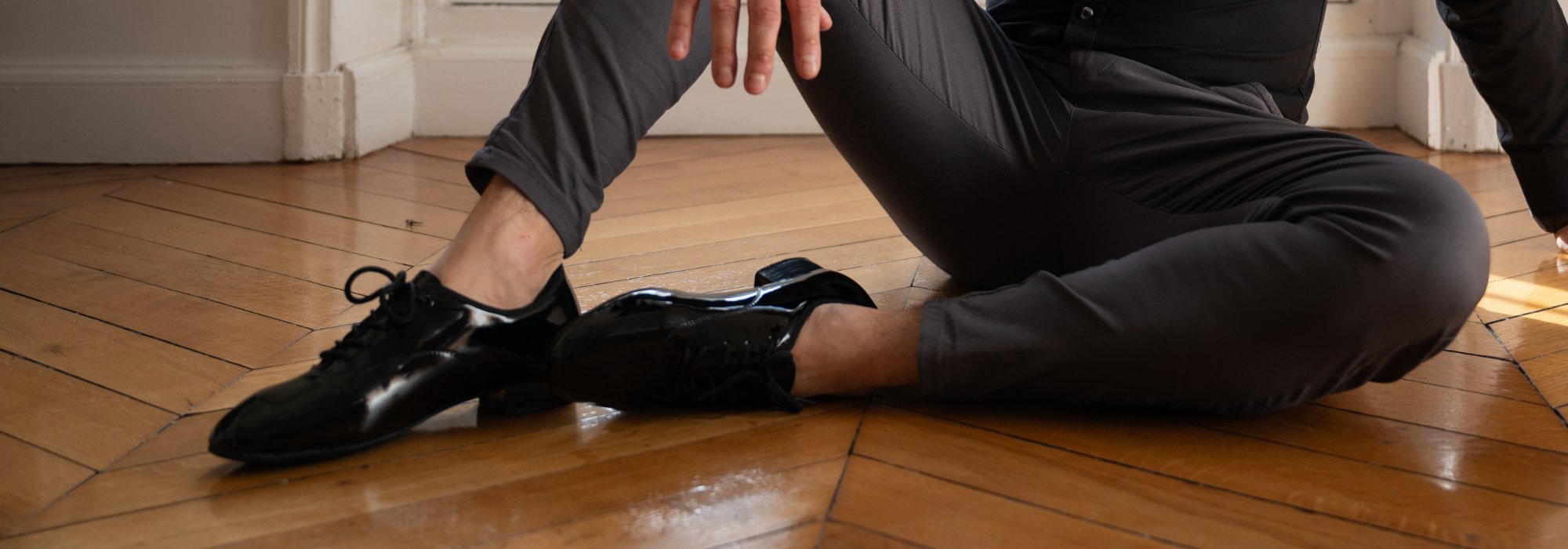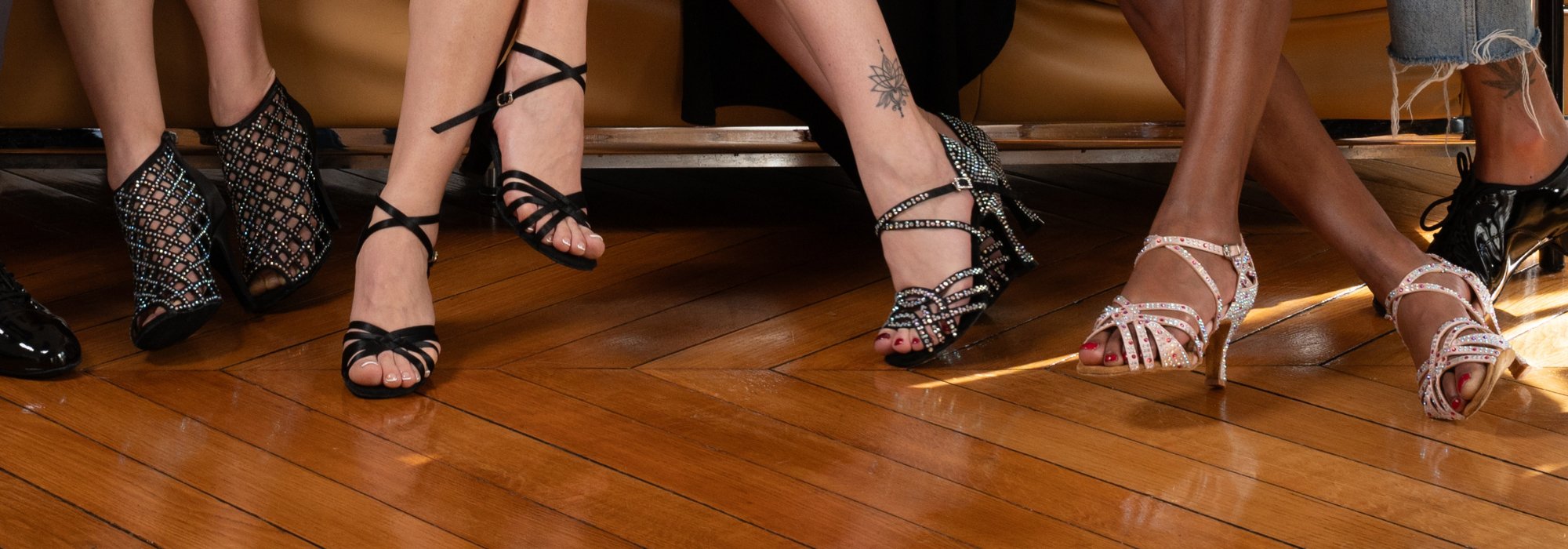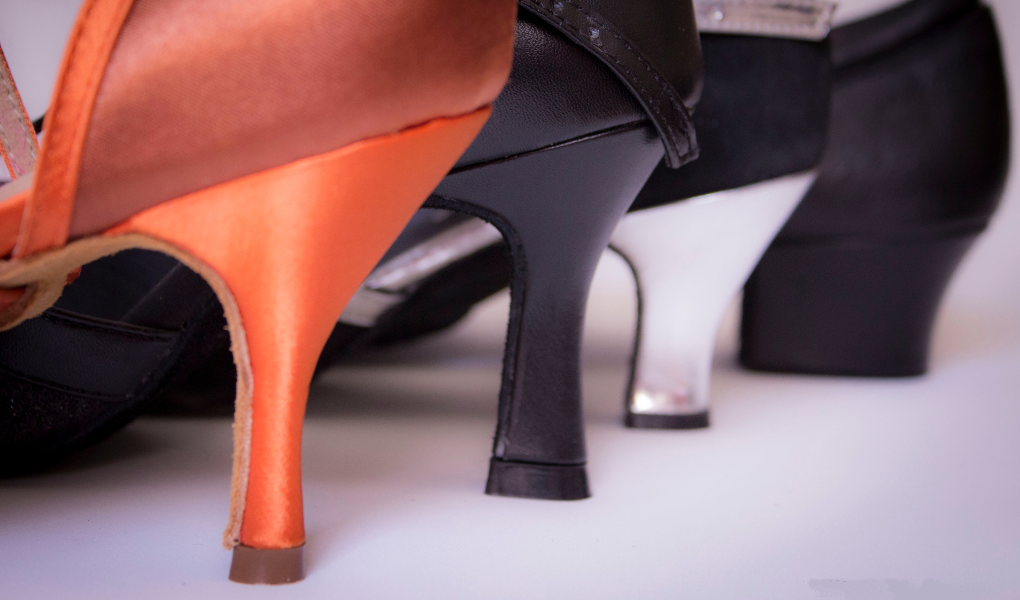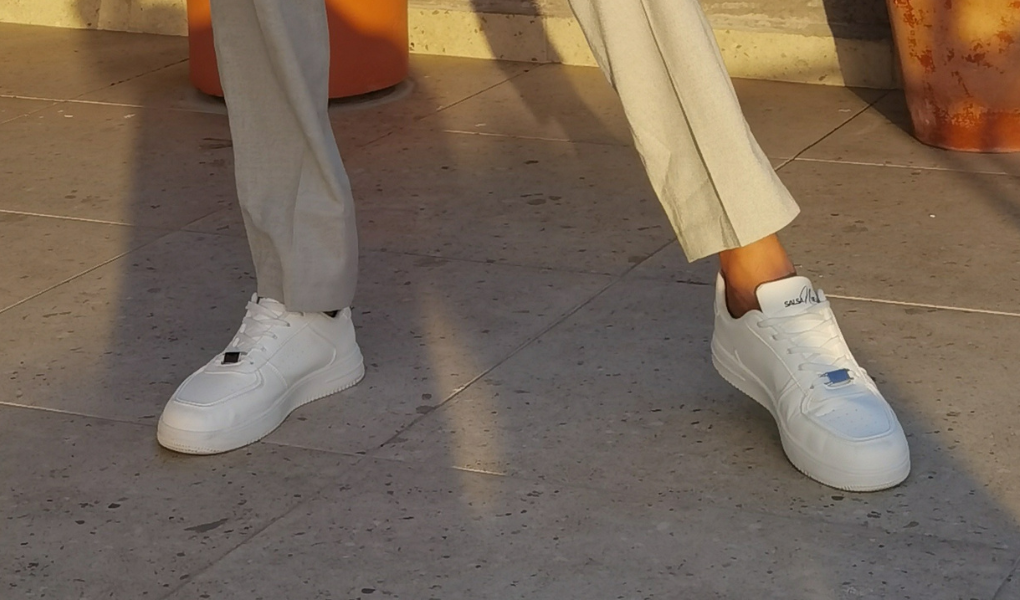How to choose your dance shoes?
THE dance shoes are much more than simple fashion accessories; They are essential for performance, Comfort and safety Dancers. Whether you are a beginner or experienced, the choice of the right pair of heels can transform your dance experience. In this article, we will guide you to the most important aspects to consider when purchasing your dance shoes, so that you can find the perfect pair for your needs.

1. Test the flexibility of the shoe
The flexibility of a dance shoe is essential to ensure the comfort and fluidity of the movements. To test this, try to bend the shoe. If you can do it easily, it means that it is flexible enough to allow you to move freely. On the other hand, if the shoe is rigid and difficult to fold, it may limit your movements and make the dance uncomfortable. The flexibility is crucial because it allows the feet to adapt to the different positions and movements required by dance, thus reducing the risk of injury and increasing the fluidity of the movements.

2. Be careful to the height of the heel
The height of the heel is a determining factor for the stability and comfort. For beginners, it is recommended to choose low heels, about 5 cm, to guarantee better stability. By progressing, you can try 7 cm heels, but it is advisable not to exceed this height until you are perfectly comfortable. For experienced dancers, the heels can be higher, up to 8 or 9 cm, but it requires a certain ease and habit. The heel height must always be chosen according to your level of comfort and your Ability to maintain balance, especially during complex passes like double/triple towers!

3. Take care of the safety of the heel
The solidity of the heel is a significant criterion to avoid accidents. A heel that moves or unstable can cause falls and injuries. Make sure that the heel is well fixed and that he does not vacillate under the impact. Heel safety is essential for rapid movements and direction changes, as an unstable heel can easily lead to an ankle torsion or a loss of balance.

4. Make sure the type of support
Maintenance of shoes dance is crucial to avoid shifts, and therefore falls. THE straps are commonly used in Latin dances shoes to ensure a good footwork. The boots are also an excellent option, offering additional support around the ankle. Good support allows you to dance with confidence, which is obviously not negligible!

5. Know everything about the types of heels and how to choose them
There are three main types of heels for dance shoes, each with their own advantages. What if you assess the heel made for you?!

- The flared heels : Mainly used for Latin dances, these heels have a wider base, offering better stability and better distributing the weight, which reduces the pressure on the feet. They are also safer, reducing the risk of ankle torsion and being ideal for fast movements and management changes.
- Straight heels (Stiletto) : Used mainly for Dance "Heels", these heels are elegant and lengthen the silhouette. They require good control and a precise technique to maintain the balance, because the small contact surface intensifies the sensations under the foot, requiring great skill.
- Thick heels : Less frequent than flared heels, but chosen by some for their comfort and stability. They offer good support, reduce fatigue and the risk of ankle torsion.
6. Know everything about the type of soles
The type of sole is another crucial aspect to consider.

- Flexible interior soles : Ideal for couple dance, these soles offer an excellent cushioning and great flexibility. They absorb shocks and reduce pressure on the feet, allowing to dance longer without excessive fatigue. The flexibility of these soles allows great freedom of movement and promotes better proprioception, helping dancers to better feel the ground and adjust their movements.

- Exterior soles : Versatile, they allow you to move on different types of floors such as concrete, tiles or wooden floors. They are practical for those who participate in courses, training or evenings in various environments. These soles are often made from robust materials that resist wear, offering good adhesion to reduce the risk of slides while allowing sufficient freedom of movement to vibrate the parquet!
7. Then comes the aesthetic side!
The aesthetics of dance shoes, although less priority, also plays an important role. Once you have found a pair that meets all the functional criteria, you can focus on style. There is a Multitude of colors and types of strips.

Depending on your tastes, your clothes and the use of your heels (training, lessons, evening), you can opt for red, purple, beige, rhinestones, leopard patterns, a jean effect pair, etc. Choosing a pair of heels that looks like you is sacred !!
Choose the right pair of dances shoes Requires to take into account several key factors: the flexibility of the shoe, the height and the solidity of the heel, the maintenance of the foot and the ankle ... not to mention the aesthetic aspect!
By taking the time to properly assess each of these aspects, you make sure to find a pair of heels which will not only allow you to dance with comfort and safety, but which will also highlight your dance and your look!

